SWITCHGEAR LIFE EXTENSION: REPLACEMENT OF ELECTROMECHANICAL OVERCURRENT RELAYING
BY TODD MARTIN, Basler Electric Company
Updating Switchgear Relays
Electromechanical overcurrent relays such as the IAC and CO are the historical backbone of power system protection. These relays use delicate mechanisms and precision components to develop their operating characteristics and are subject to misoperation and failure resulting from contamination, corrosion, and simple aging. As a result, frequent testing and recalibration are required to ensure proper operation. As the relays continue to age, failing internal insulation and increasing cost associated with maintenance and repair of the relays makes it increasingly difficult to ensure reliable operation. Reliable operation is essential for personal safety and the prevention of unnecessary outages and/or extensive damage due to overloads and faults.
One solution to this problem is to upgrade the relays which will easily extend the life of the switchgear 10 to 20 years with minimal financial investment and very little labor. Upgrading reduces the need for maintenance and increases protection reliability which is very valuable during times of limited maintenance budgets. At the same time, upgrades often improve accuracy which is increasingly important because many systems are operating with less margin than planned for in their original design.
The technology available in modern relay systems allows one device to replace what once took many separate devices to accomplish. Phase and ground protection are available in one box, along with ancillary features such as metering, data capture, advanced communications, and post fault analysis. What is sometimes overlooked is the value that newer technology can add by simply providing the same functionality as existing relays with less maintenance, less system burden, better precision, and greater reliability. There are several options for extending the life of switchgear by upgrading to newer technology, retrofit relays.
One option is to replace existing relays with plug and play relays that require no wiring changes.The second option is to upgrade in place which means that a retrofit relay will fit the existing panel cutout. Some rewiring for the upgrade relay is required, but the existing panel does not have to be replaced. The first option benefits from being easier. It requires no down time and often can be done as part of routine maintenance and testing. The second option requires slightly more work and down time, but provides an avenue to add immediate benefits such as metering, event reporting, remote communications, and future automation.
Plug and Play Relay Upgrade
When facing electromechanical overcurrent relay obsolescence, a chemical facility in the Midwest chose to upgrade with plug and play relays. Their facility had 72 General Electric IAC relays that were to be replaced. For the upgrade, they selected the Basler BE1-50/51B-214 time overcurrent relays. The relay, a direct plug and play replacement for the IAC relay, is installed with no wiring or case change. The BE1-50/51B-214 has selectable time curves that emulate the majority of IAC variations, and it has less CT burden than the IAC model. This makes for a simple, economical way to upgrade from aging relays without the expense of completely redesigning and rewiring the systems to accept currently available functional replacements.
The retrofit kit consists of a relay cradle, an adapter plate, and a cover. The kit allows plug-in installation in an existing lAC case. In order to prepare for the retrofit process, the facility’s test and maintenance personnel received a day of on-site training. Fifteen employees spent most of the day learning about the relay. The training covered the relay basics, specifics of the 214 retrofit version, the retrofit process, and relay setup and testing. The identified process contained six steps:
- STEP 1: Set the relay to the desired pickup and timing settings. An available spreadsheet provided the necessary information to convert the electromechanical time curves to the correct equivalent curve on the replacement relay.
- STEP 2: Remove the existing relay.
- STEP 3: Attach the cover adapter with four provided screws.
- STEP 4: Install the new relay.
- STEP 5: Reinstall the existing connection plug.
- STEP 6: Install the new relay cover.
The newly trained personnel were able to test and install the relays at a rate of three relays per hour. At this pace, replacement of all 72 relays was completed in only a few days. The retrofit was accomplished with minimal down time, minimal work, and most importantly, minimal expense. Because the new relays are solid state, they have no critical moving parts that can affect their performance and they require minimal maintenance. They also meet all ANSI/IEEE standards for operation in harsh power system environments.
The benefits continued well after the installation. During periodic maintenance or troubleshooting, an electromechanical relay’s timing characteristics must be checked and calibrated. Correct pickup and timing need to be determined by test in an iterative process. Settings in the relays are made by front panel switch settings. There is no calibration. These relays are not subject to drift or change in performance, so recalibration is never necessary. This can save valuable time in an outage emergency and save money in periodic maintenance costs on an ongoing basis. The savings in maintenance costs alone easily justify the cost of the new relays.
Numeric Retrofit Upgrade
Plug and play relays are not the only easy solution for accomplishing life extension of switchgear. The chemical facility could have chosen an alternate solution: a numeric retrofit installation. The IAC relays being replaced were simple devices with only instantaneous (50) and time (51) overcurrent elements. Any numeric relay far exceeds the protection available from the IAC relay. Just because the numeric relays provide multiple 50s, 51s, and a variety of other protective and control elements, does not mean the installer must use them. Remember, the goal was not to reengineer the switchgear, but to remove the existing relays that provided 50 and 51 protection and install one or more devices to provide the same protection to improve precision, increase reliability, and reduce maintenance. The solution of installing numeric retrofit required some wiring changes. Figure 1 shows the CT connections for a typical installation with three phase and neutral IAC relays.
Figure 2 shows the DC circuit for the same typical system. The two diagrams show four relays with one each for phase A, phase B, phase C, and ground. Each relay has time and instantaneous outputs. All outputs are paralleled together to provide voltage to the 52 trip coil in the case of a fault.
The process is a little different from the process of installing the plug and play but is still an easy install. Steps one (setting the relay) and two (wiring the relay) are the key differences. The list of steps is as follows.
• STEP 1: Set the relay to the desired pickup, timing settings, and logic. An available spreadsheet provided the information needed to convert the electromechanical time curves to the correct equivalent curve on the replacement relay.
• STEP 2: Remove the existing relay and case, taking care to label the wires before detaching.
• STEP 3: Install the new relay case in the panel.
• STEP 4: Wire up the new case.
• STEP 5: Install the new connection (paddle) plug.
• STEP 6: Install the relay cover that came with the new relay.
FEATURE
In this example, the BE1-851 is selected for the retrofit because it is available in the same S1 case size as the IAC. Although setting the 851 relay involves a few more steps than the BE1—50/51, it is still straightforward.
Setting the relay includes setting the pickup and timing, connecting 50 and 51 elements to an output, and enabling the elements. Figure 3 shows the pickup settings.
Figure 5: Shows the enable setting for each element.
Wiring the relays, a necessary step in the plug and play replacement, is not difficult if broken down into a series of simple tasks. The relay has four CTs, one for each phase and one for ground. Each CT is wired where the corresponding IAC CT was wired previously. The next step involves wiring out the trip contact. The 851 solution requires just one contact whereas the IAC solution had eight contacts. The wires from any one of the IAC contacts will be connected to the previously set up relay’s output contact. The remaining wires will be removed or safely insulated and moved aside. The final wiring task is to bring station battery and chassis ground to the relay. This is necessary because the new relay is not line powered. Table 1 shows the wiring for the original and the new relay.
The only remaining task is to install three metal fill panels since four relays were removed and only one installed.
Again, the retrofit was accomplished with a small amount of down time, a small amount of work, and most importantly, at reduced expense. Because the 851 is a digital relay system, it has no critical moving parts that can affect performance and will require minimal maintenance. It also meets all ANSI standards for operation in harsh power system environments. The same benefits gained with the plug and play relay continue well after the installation with the retrofit. The numeric relay provides the possibility of additional benefits. The meeting allows for quick verification that the relay is still measuring correctly without taking the relay out of service. If desired, communications can provide increased monitoring with future SCADA upgrades.
SUMMARY
Upgrading relays is an economical way to extend the life of switchgear. With proper planning it can be done with little down time, minimal (if any) engineering effort, and at low cost. The initial cost will be recouped in a short time as a result of reduced periodic maintenance and reduced down time. A key decision to be made is whether to use a plug and play relay, or a numeric retrofit upgrade. Table 2 shows key characteristics of each option.
Todd Martin is Product Line Manager, Protection, for Basler Electric Company. He has been employed by Basler for 18 years, with more than 15 years of engineering experience in digital, analog, and firmware design for protective relays. Todd received a BSEE from the Southern Illinois University at Edwardsville, Illinois, and is a member of IEEE.
To view original article in pdf format, please go here.
Recent Posts
ELECTRICAL SCHEMATIC OF THE EARTH AND SOLAR SYSTEM
Greg Poole Industrial Tests, Inc. Rocklin, CA, ...PLANCK, MUON, AND FINE STRUCTURE CONSTANT
Greg Poole Industrial Tests, Inc. Rocklin, CA, ...Electro Dynamo Theory & Schumann Resonance
Greg Poole Industrial Tests, Inc. Rocklin, CA, ...Speed of Light and Gravity
Greg Poole Industrial Tests, Inc. Rocklin, CA, ...Solar System Electrostatic Motor Theory
Greg Poole Industrial Tests, Inc. Rocklin, CA, ...
Archives
- July 2020
- January 2020
- December 2019
- November 2019
- October 2019
- September 2019
- August 2019
- September 2018
- August 2018
- July 2018
- June 2018
- May 2018
- April 2018
- March 2018
- February 2018
- January 2018
- December 2017
- November 2017
- October 2017
- March 2015
- February 2015
- December 2014
- November 2014
- October 2014
- September 2014
- August 2014
- August 2013


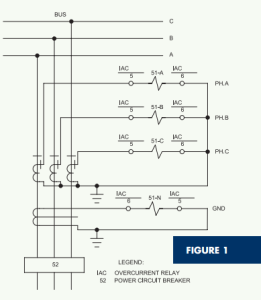
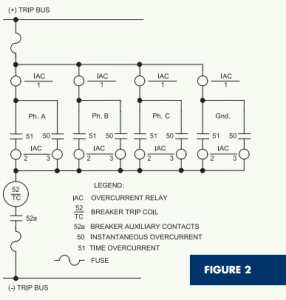
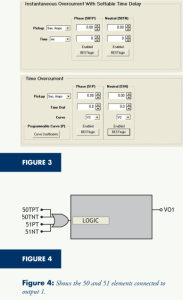
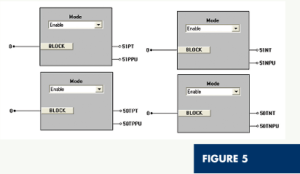
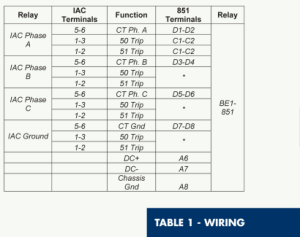
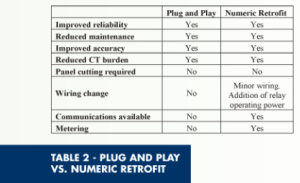
Recent Comments